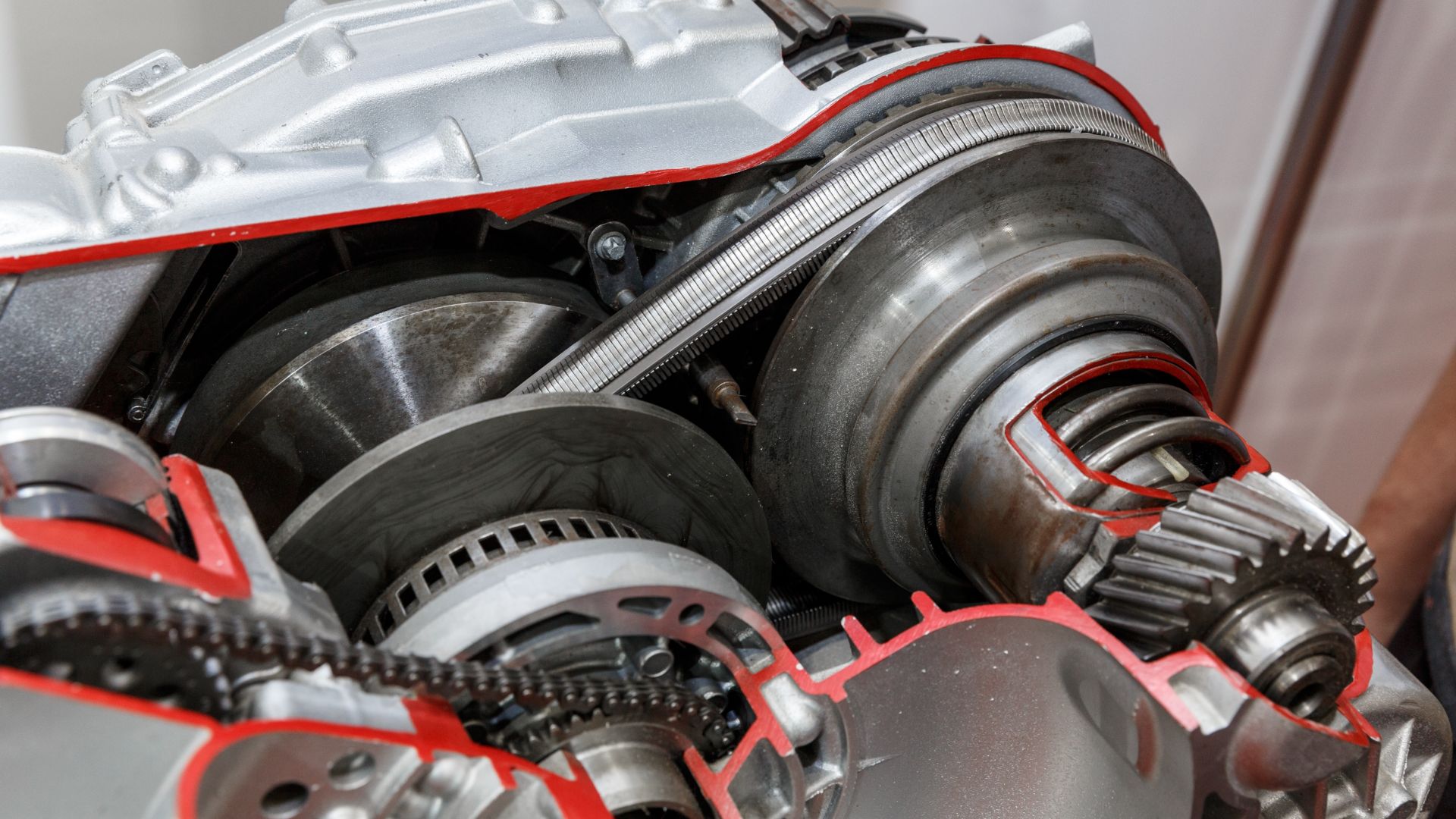CVT definition and meaning

A CVT is a type of automatic transmission that uses a pulley and belt system to provide an infinite number of gear ratios. This means that the engine can always operate at its optimal RPM level, resulting in improved fuel economy.
CVTs are often found in smaller vehicles such as subcompacts and hybrids, but they are gradually becoming more common in mainstream cars as well. One advantage of CVTs is that they tend to be more efficient than traditional automatic transmissions with fixed gear ratios.
Another advantage is that CVTs can provide a smoother driving experience since there are no discrete gear changes. However, one downside of CVTs is that they can sometimes result in a “rubber band” feeling when accelerating, where the engine revs up but the vehicle doesn’t necessarily accelerate at a corresponding rate.
A CVT consists of two pulleys connected by a belt or chain. The primary pulley is connected to the engine and the secondary pulley is connected to the wheels. The belt or chain runs around the pulleys and adjusts its size to create different gear ratios.
The primary pulley has variable width sheaves that contract or expand to change the size of the pulley’s diameter. This alters the speed of the belt or chain running around it. The secondary pulley also has variable width sheaves, but they are connected to the input shaft of the transmission.
When the sheaves in the primary pulley contract, the belt or chain moves closer to the center of the pulley. This reduces the diameter of the secondary pulley and increases its speed. Conversely, when the sheaves in the primary pulley expand, the belt or chain moves away from the center of the pulley. This increases the diameter of the secondary pulley and decreases its speed.
The belt or chain is always in contact with both pulleys at all times. This creates a “continuously variable” transmission, as there are an infinite number of gear ratios possible. The transmission can be tuned to provide the optimal ratio for any given driving condition.